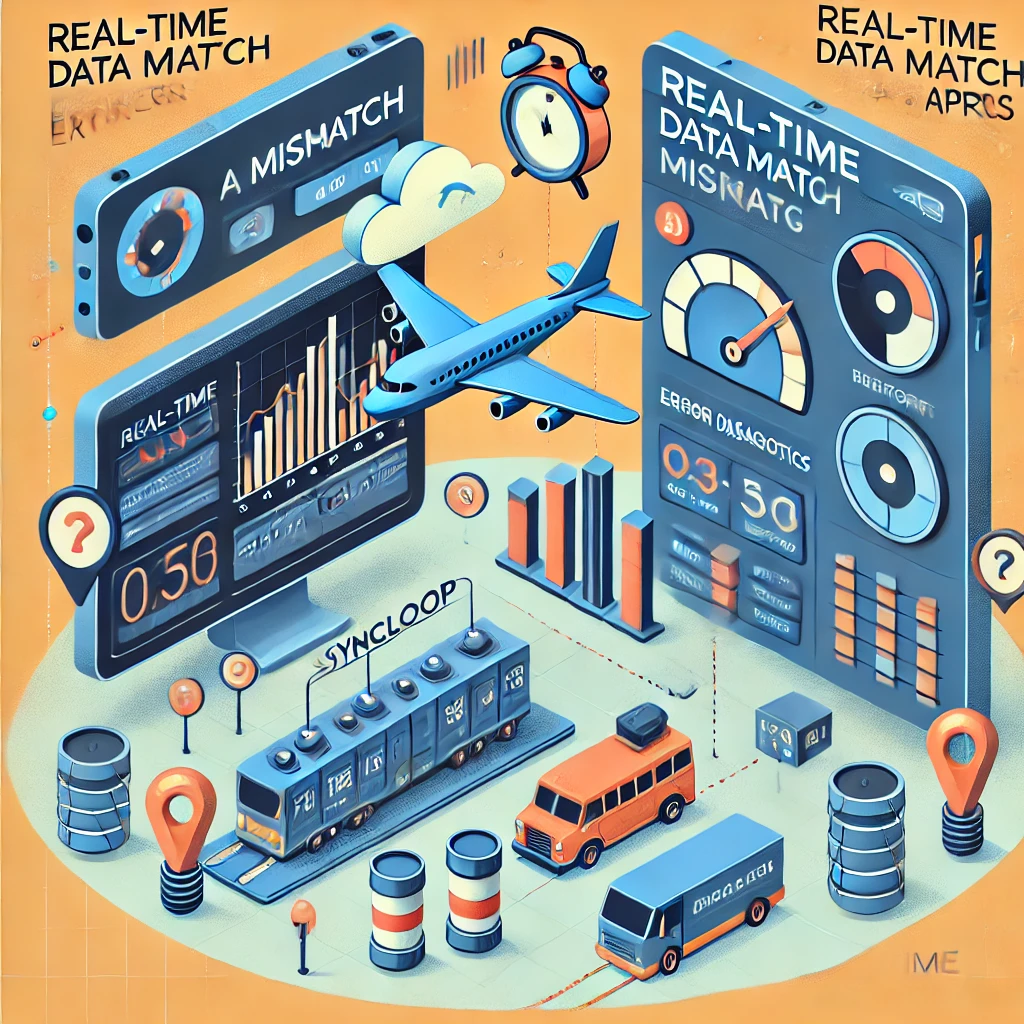Debugging Real-Time Data Mismatch Errors in Syncloop APIs

Syncloop offers advanced tools for debugging real-time data mismatch errors, enabling developers to pinpoint issues, implement fixes, and optimize workflows efficiently. This blog explores common causes of data mismatches in real-time APIs and how Syncloop simplifies their resolution.
Common Causes of Real-Time Data Mismatch Errors
- Latency Issues: Delays in data propagation can result in inconsistencies between different system components.
- Data Format Discrepancies: Mismatches in expected data formats or types between APIs and consuming applications.
- Integration Errors: Misconfigured connections between APIs and third-party services or data sources.
- Concurrency Conflicts: Overlapping operations on shared data can lead to inconsistencies.
- Incomplete Updates: Partial updates to data structures or caches.
- Version Mismatches: API consumers using outdated versions that expect different data structures or fields.
How Syncloop Simplifies Debugging
Syncloop provides a comprehensive set of tools to identify, analyze, and resolve data mismatch errors:
1. Real-Time Monitoring
Syncloop tracks API activity in real-time, offering visibility into request and response data, error rates, and performance metrics.
2. Detailed Request and Response Logs
Logs capture the full details of API calls, including payloads, headers, and status codes, helping developers trace mismatched data points.
3. Data Transformation Debugging
Syncloop’s data mapping tools allow developers to view and debug transformations applied to data in workflows.
4. Event Replay
Re-run specific API calls with identical parameters and payloads to reproduce and analyze data mismatches.
5. Schema Validation
Syncloop validates incoming and outgoing data against predefined schemas, flagging mismatched or missing fields.
6. Error Notifications
Configurable alerts notify developers of real-time anomalies or high error rates, ensuring quick responses.
7. Dependency Tracking
Monitor dependencies like databases or external APIs to identify upstream or downstream issues contributing to data mismatches.
Steps to Debug Data Mismatch Errors in Syncloop
Step 1: Analyze Logs
- Review Syncloop’s request and response logs for discrepancies in payloads or headers.
- Look for unexpected data types, missing fields, or incorrect values.
Step 2: Validate Data Transformations
- Check Syncloop’s data mapping configurations to ensure transformations align with expected formats.
- Debug any custom scripts or logic applied to data.
Step 3: Test Event Flow
- Use Syncloop’s event replay tool to simulate API calls and confirm data flows as intended.
Step 4: Monitor Dependencies
- Check the status and response data of connected services or databases for inconsistencies or delays.
Step 5: Update Schemas
- Validate API payloads against updated schemas to ensure compatibility and prevent future mismatches.
Step 6: Implement Fixes
- Adjust configurations, update integration points, or correct data mappings based on debugging insights.
Best Practices for Preventing Data Mismatch Errors
- Use Schema Validation: Define and enforce strict data schemas to minimize inconsistencies.
- Enable Real-Time Monitoring: Continuously track API interactions to identify issues early.
- Test Thoroughly: Simulate real-world scenarios to validate API behavior under various conditions.
- Version Control: Maintain backward compatibility by versioning APIs and notifying consumers of changes.
- Optimize Transformations: Ensure data mapping and transformations align with business logic and system requirements.
- Collaborate with Stakeholders: Communicate data expectations and schema changes with integration partners.
Conclusion
Real-time data mismatches can disrupt applications and degrade user experiences, but Syncloop provides the tools to debug and resolve these issues efficiently. By leveraging real-time monitoring, detailed logs, and schema validation, developers can quickly identify root causes, implement fixes, and enhance system reliability.
Whether addressing latency issues, integration errors, or data format discrepancies, Syncloop empowers developers to maintain seamless real-time workflows. Embrace Syncloop to build robust APIs that handle real-time data processing with precision and reliability.
A visualization of a debugging workflow powered by Syncloop, featuring real-time monitoring, data validation, and event replay tools for resolving data mismatches.
Back to Blogs